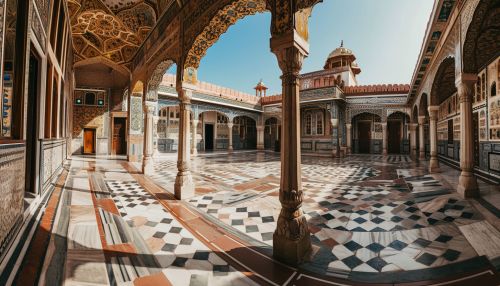Mughal Empire
Origins and Formation
The Mughal Empire, also known as the Mogul Empire, was an early-modern empire in South Asia. The empire was established in 1526 by Babur, a descendant of the Timurid and the Genghisid dynasties. Babur was a Central Asian ruler who was first driven out of his ancestral domains in Central Asia by the Uzbeks. He turned to India to satisfy his ambitions and laid the foundation for the Mughal Empire.
Expansion under Akbar
Babur's son, Humayun, ascended the throne at a young age and initially lost the empire to the Suri Dynasty, but later regained it with the help of the Safavids of Persia. Humayun's son, Akbar, is often considered the true consolidator of the Mughal Empire. He expanded the empire to include nearly all of the Indian Subcontinent north of the Godavari River. Akbar's rule also saw the establishment of a centralized system of administration throughout his empire and increased cultural integration due to his policies of religious tolerance.
Decline and fall
The Mughal Empire began to decline in the 18th century as the Maratha Empire rose to prominence. The empire went into a slow decline after the death of Aurangzeb in 1707, but continued to exist until the mid-19th century. The empire's decline has been the subject of much debate among historians, with some attributing it to Aurangzeb's religious intolerance and others to economic factors.
Administration and Economy
The Mughal Empire had a centralized system of administration, with a complex organization of provinces and local officials. The empire's economy was agrarian and cash crops included cotton, textiles, and poppy. The Mughal emperors introduced a land tax system called the Zamindari system, which became a major source of revenue for the empire.
Culture and Society
The Mughal Empire is known for its rich culture and society. The empire was marked by a highly syncretic culture that combined elements of Persian, Turkic, Indian, and various regional cultures. The Mughal emperors were known for their patronage of the arts, and the empire saw a cultural golden age during the reign of Shah Jahan, who commissioned many architectural wonders such as the Taj Mahal.
See Also


